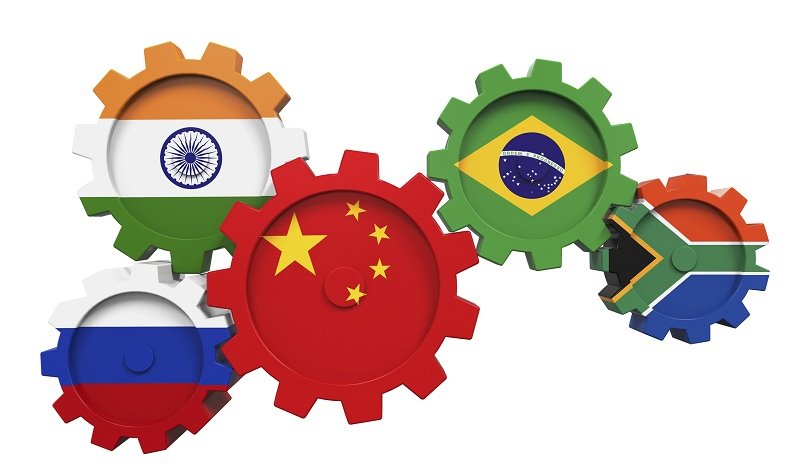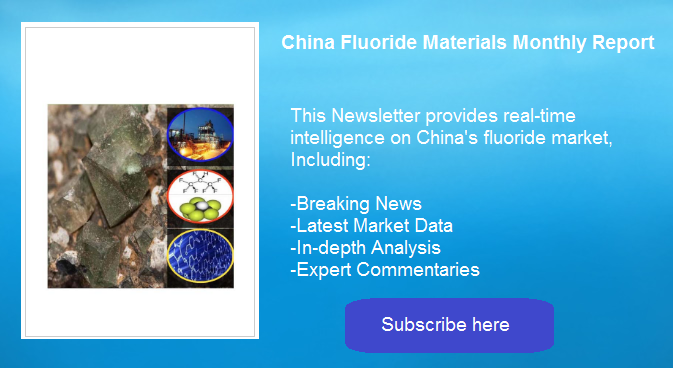The
BRICS group of emerging countries is increasing internal trade relations to
strengthen their cooperation in getting less dependent on the Western-lead
global order. This is also witnessed for China’s fluoride trade, shown by the
growing exports of Do-Fluoride Chemicals, one of China’s leading market
players.

In
the beginning of September, a representative of the executive board of China’s
fluoride giant Do-Fluoride Chemicals, revealed that the' foreign trade volume
of the company with the other members of the BRICS group, which consists of the
five major emerging nations Brazil, Russia, India, China and South Africa, in
the past five years has increased to about USD116 million. According to the
executive board, it is furthermore predicted that the figure in 2017 would rise
again and exceed USD35 million.
Since
the establishment of BRICS, Do-Fluoride Chemicals has increasingly frequent
trade and close cooperation with the other four BRICS countries, which are
major producing areas of electrolytic aluminium. According to market
intelligence firm CCM, these countries have an annual production capacity of a
total of more than 8.5 million tonnes. As Do-Fluoride Chemicals’ cryolite and
anhydrous aluminium fluoride (AHF) are fluxing agents for electrolytic
aluminium, its trade value with four BRICS countries reached USD11.26 million
in 2016. Moreover, its annual export volume of cryolite and aluminium fluoride
(AlF3) has respectively ranked first for 15 and 10 consecutive years in China.
The
main downstream factors for the international fluoride chemicals market is the
glass industry as well as aluminium, smelting, metallurgy and the chemical
industry in general. The main markets for these products are North America,
Asia Pacific, and Western Europe. While the Western countries are mainly
demanding acid fluorite, China is using fluorite for the booming cement and
glass industry.
However,
the economic growth of the five nations, in general, has slowed down in recent
time, where China has witnessed the weakest growth rate of the last 25 years
and Brazil as well as Russia even faced a recession. Trade experts, as a
result, say the ambitions of the BRICS countries to seek a bigger voice in the
global financial order remain largely unfulfilled.
The
internal trade between the group is still only counting for a small amount of
their global trade. About 5% of the trade is done between each other. Hence,
the countries still have a huge potential to increase their internal group
trade and become more sustainable as a group with less dependence on the world
market.
About
Do-Fluoride
Do-Fluoride
Chemicals Co., Ltd. develops, produces and sells chemical products like
cryolite, aluminium fluoride and inorganic fluoride compound products. The
Company's products include anhydrous hydrogen fluoride, industrial hydrofluoric
acid, ammonium bifluoride, and potassium fluoride.

Do-Fluoride
had a total revenue of USD229.5 million in the first half of 2017, which
indicated a growth of more than 20% compared to the same period of last year.
However, both, the operating profit as well as the total profit went down in H1
2017. According to CCM, the main reason can be found in fewer subsidies on alternative
energy vehicles and the consequent smaller demand for lithium salt.
About
BRICS
The
BRICS group has created its own development bank as well as a reserve fund to
establish an alternative to the Western-controlled institutions of this kind.
The basic idea behind this is the launch of an institution which finance
infrastructure can manage and prevent future economic crises for its members.
Set up in the year of 20l5 as an alternative to the World Bank, the New
Development Bank was one of the first major BRICS achievement after the group
came together in 2009 to press for a bigger say in the post-World War Two
financial order created by Western powers.
It
is notable, that the BRICS countries are responsible for slightly less than a
quarter of the world’s GDP, granting this group immense influence for the
future. Of the BRICS’s GDP, China alone has a share of half of it, leading the
group in terms of economic power. What’s more, besides having the share of
around a quarter of world’s GDP, the population of BRICS countries is
accounting for around 42% of the world population, mainly due to the large
population of China and India. This is why those states are likely to grow
comparably fast in the near future than Western countries, which are facing
partly a population stagnancy or slower growth.
Other
countries are getting increasingly attracted to join the group, especially now
with US president Donald Trump is following his agenda of putting America first
and announces to cancel or free trade agreements. One example is the North
American Free Trade Agreement, which, if it should be cancelled, would put
Mexico into a more difficult international trade situation and may push the
country closer to the BRICS states.
As
the BRICS group may expand in the future with new emerging countries like
Indonesia and Mexico joining, fluoride manufacturers should track the development
to find their place in the trade flow between this group.
About CCM
CCM
is the leading market intelligence provider for China’s agriculture, chemicals,
food & ingredients and life science markets.
Do
you want to find out more about the fluoride market in China? Try our Newsletters and Industrial Reports or join our professional online platform today and get insights in Reports, Newsletter, and Market Data at one place.
For
more trade information of fluoride products, including Import and Export
analysis as well as Manufacturer to Buyer Tracking, contact our experts in trade analysis for in-depth insides.